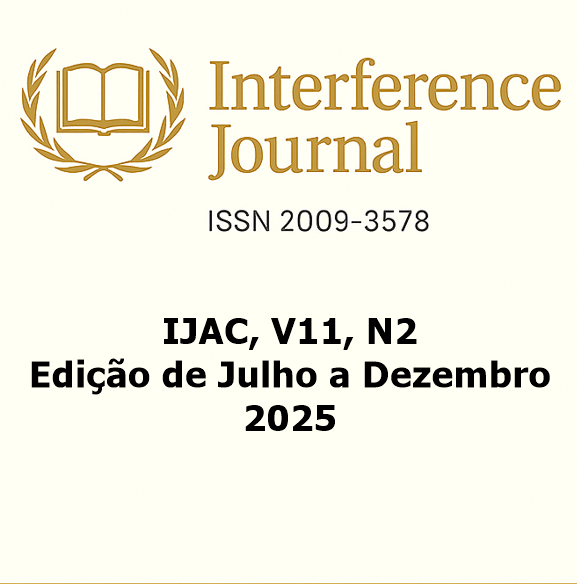USO DE SOLUÇÃO DE AZUL DE METILENO 1% NO TRATAMENTO DE HIPÓXIA CEREBRAL NEONATAL EM CORDEIRO – RELATO DE CASO
DOI:
https://doi.org/10.36557/2009-3578.2025v11n2p1608-1614Keywords:
Azul de metileno, Hipóxia, NeonatoAbstract
O azul de metileno (AM) é um corante orgânico lipossolúvel de eficácia no controle do estresse oxidativo, seu efeito no cérebro atua em sítios cerebrais promovendo benefícios como: melhoria no declínio cognitivo, ação terapêutica na neurodegeneração pela disfunção mitocondrial e ação neuroprotetora de neurônios dopaminérgicos. O objetivo do trabalho é avaliar a eficácia da ação da solução de Azul de Metileno 1% como método terapêutico em um caso de hipoxia neonatal em cordeiro. O atendimento foi realizado no Hospital Veterinário da Universidade de Marília - UNIMAR, com o cordeiro apresentando quadro grave de hipóxia neonatal com sintomatologia neurológica e altos valores de lactatemia e demais enzimas bioquímicas confirmando a gravidade do caso. Foi administrado protocolo de solução de Azul de Metileno 1% intravenosa lenta com 3 aplicações com posterior avaliação hematológica para verificação das enzimas bioquímicas e parâmetros vitais. O resultado positivo da terapêutica foi visível já na primeira aplicação, demonstrando melhora significativa nos exames laboratoriais e na sintomatologia clínica, evidenciando a eficácia do tratamento instituído e a melhora no prognóstico do paciente.
Downloads
References
ALDA, M. Methylene Blue in the Treatment of Neuropsychiatric Disorders. CNS Drugs. Aug;33(8):719-725,2019.
BERROCAL, M.; CORBACHO, I; GUTIERREZ-MERINO, C.; MATA, A. M. Methylene blue activates the PMCA activity and cross-interacts with amyloid β-peptide, blocking Aβ-mediated PMCA inhibition. Neuropharmacology. Sep 1;139:163-172,2018.
FENN, A.M.; SKENDELAS, J.P.; MOUSSA, D.N.; MUCCIGROSSO, M.M.; POPOVICH, P.G.; LIFSHITZ, J.; et al. Methylene blue attenuates traumatic brain injury-associated neuroinflammation and acute depressive-like behavior in mice. J Neurotrauma. 2015;32:127–38.
LI, L.; QIN, L.; LU, H. L.; LI, P. J.; SONG, Y. J.; YANG, R. L. Methylene blue improves streptozotocin-induced memory deficit by restoring mitochondrial function in rats. Brain Res. Feb15;1657:208-214,2017.
LU, Q.; TUCKER, D.; DONG, Y.; ZHAO, N.; ZHANG, Q. Neuroprotective and functional improvement effects of methylene blue in global cerebral ischemia. Mol Neurobiol. 2016;53:5344–55.
SMITH, E. S.; CLARK, M. E.; HARDY, G. A.; KRAAN, D. J.; BIONDO, E.; GONZALEZ-LIMA, F.; CORMACK, L.; K.; MONFILS, M.; LEE, H.; J. Daily consumption of methylene blue reduces attentional deficit sand dopamine reduction in a 6 OHDA model of Parkinson’s disease. Neuroscience, 359, 8–16, 2017.
WHO. The selection and use of essential medicines. Report of the WHO Expert Committee, 2015 (including the 19th WHO Model List of Essential Medicines and the 5th WHO Model List of Essential Medicines for Children). Geneva: World Health Organi zation; 2015:
YIN, S.; SHAO, J.; WANG, X.; YIN, X.; LI, W.; GAO, Y, VELEZ DE-LA-PAZ, O. I.; SHI, H.; LI, S. Methylene blue exerts rapid neuroprotective effects on lipopolysaccharide induced behavior all deficits in mice. BehavBrain Res. Jan 1;356:288-294,2019.
Downloads
Published
How to Cite
Issue
Section
License
Copyright (c) 2025 Andressa Rozzetto Garcia, Maria Eduarda Cruz Silva, Milena Lopes Ferraz; Isabela Bazzo Costa; Marina Cecilia Grandi, Marcilio Felix, Leticia Peternelli Silva

This work is licensed under a Creative Commons Attribution 4.0 International License.
Você tem o direito de:
- Compartilhar — copiar e redistribuir o material em qualquer suporte ou formato para qualquer fim, mesmo que comercial.
- Adaptar — remixar, transformar, e criar a partir do material para qualquer fim, mesmo que comercial.
De acordo com os termos seguintes:
- Atribuição — Você deve dar o crédito apropriado , prover um link para a licença e indicar se mudanças foram feitas . Você deve fazê-lo em qualquer circunstância razoável, mas de nenhuma maneira que sugira que o licenciante apoia você ou o seu uso.
- Sem restrições adicionais — Você não pode aplicar termos jurídicos ou medidas de caráter tecnológico que restrinjam legalmente outros de fazerem algo que a licença permita.


